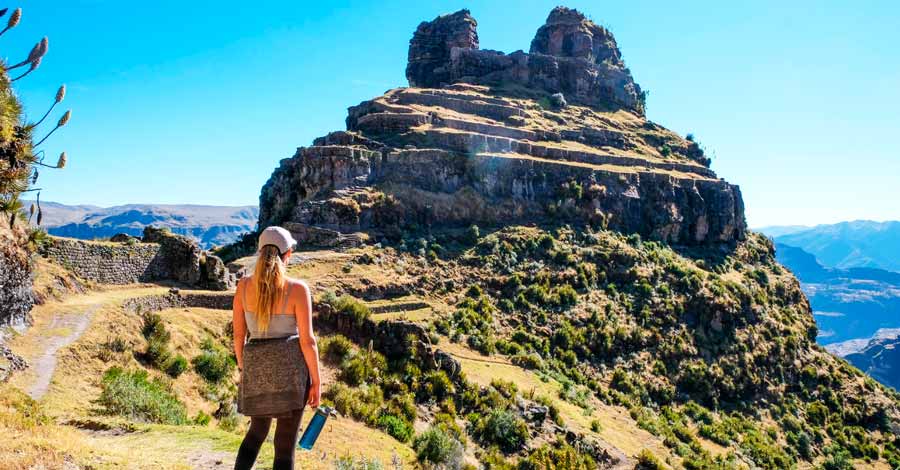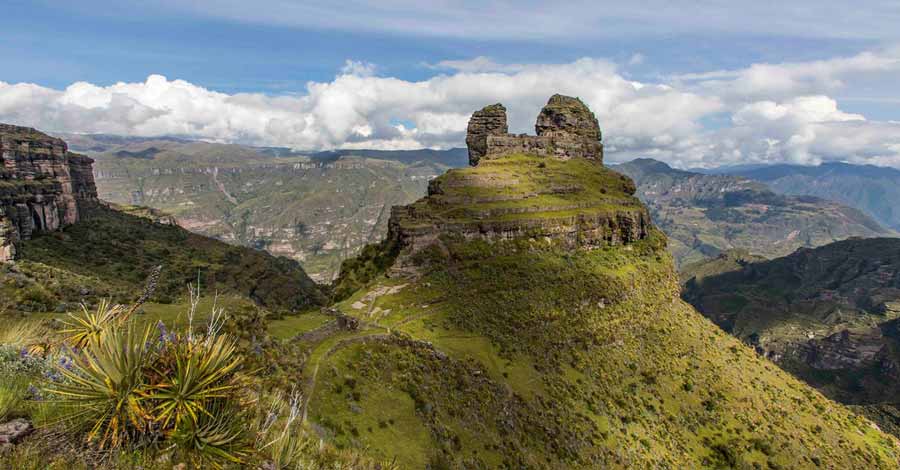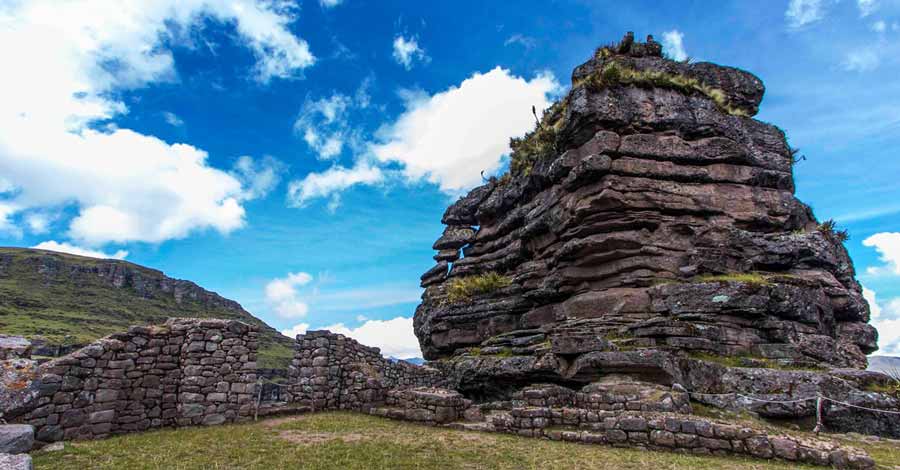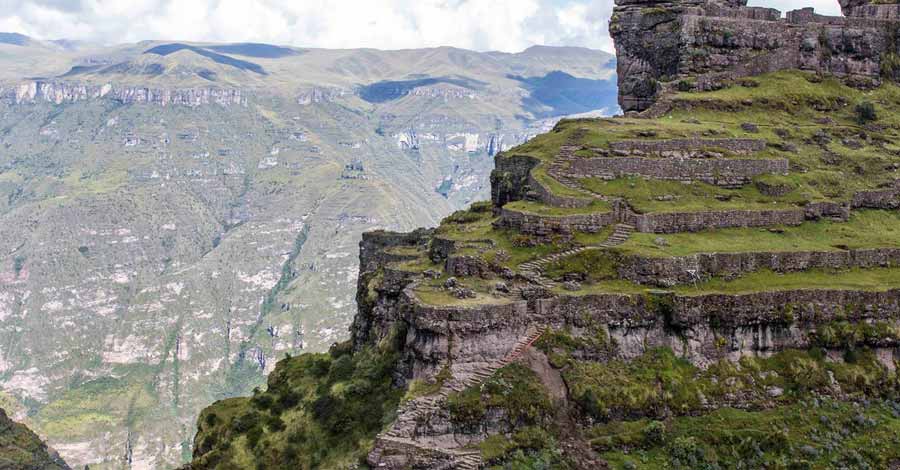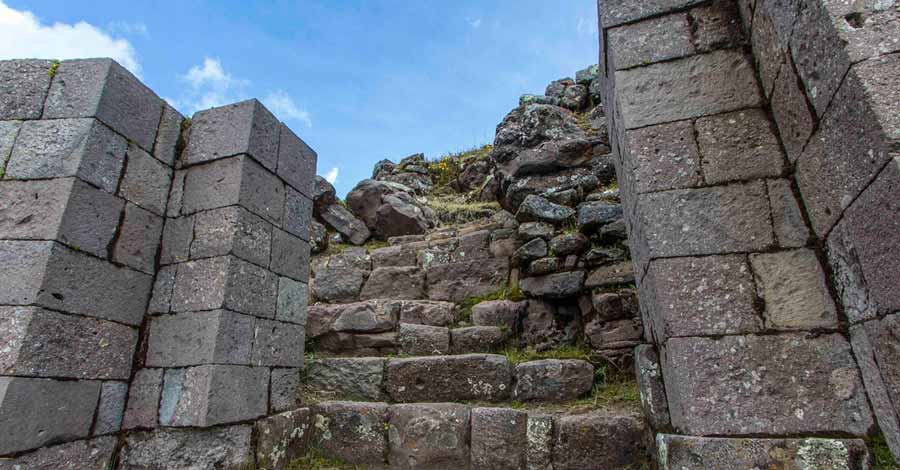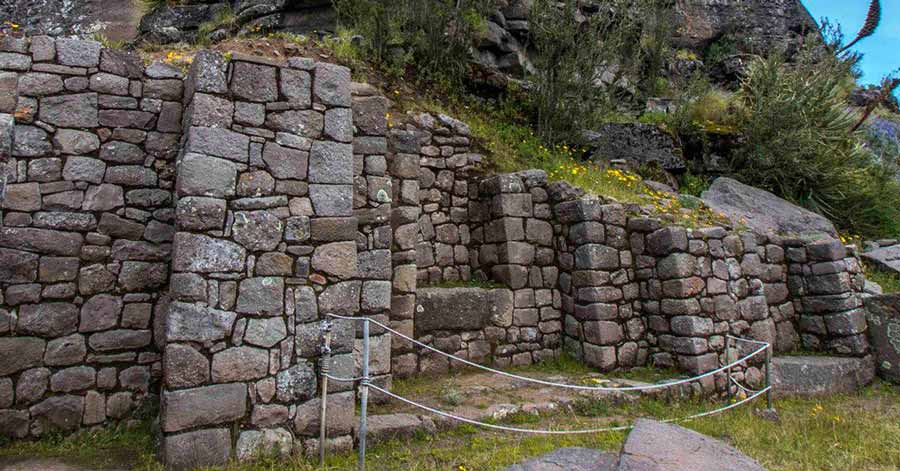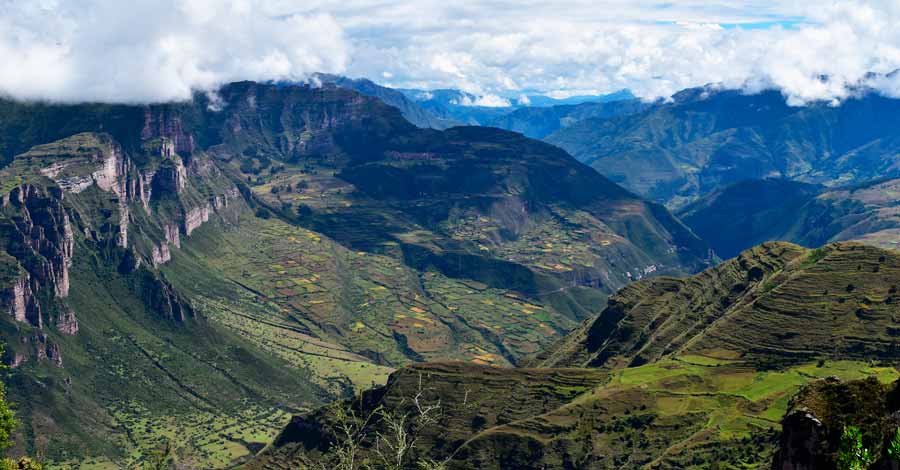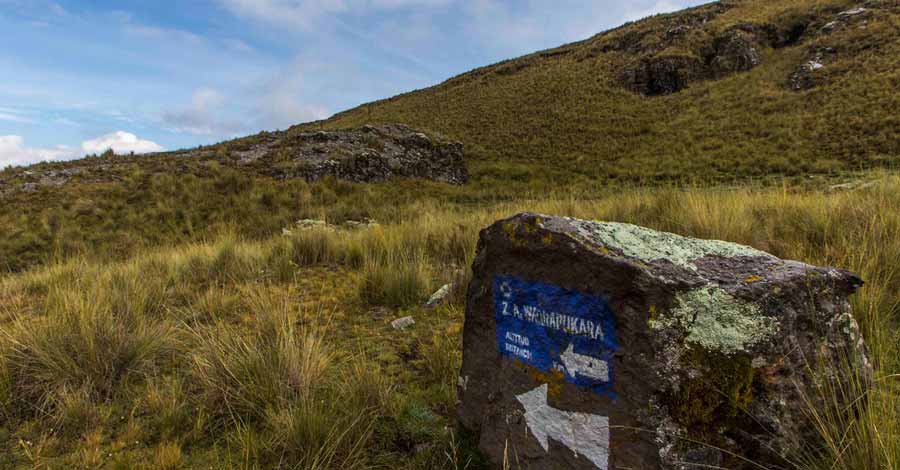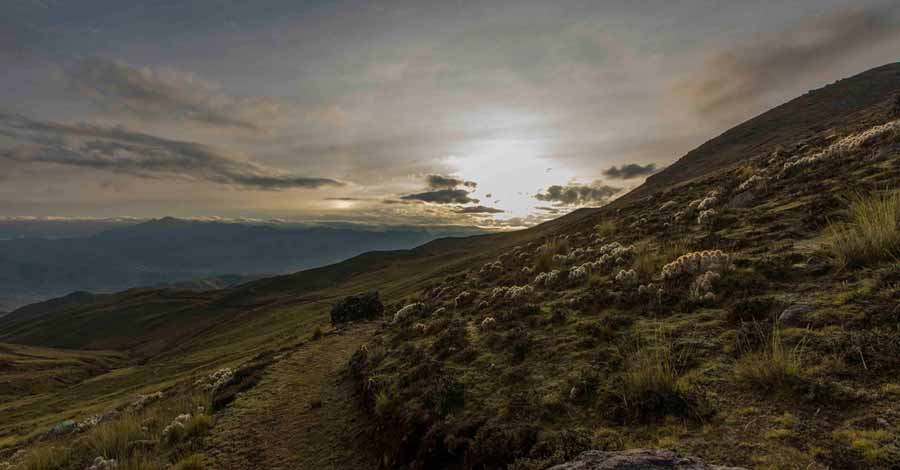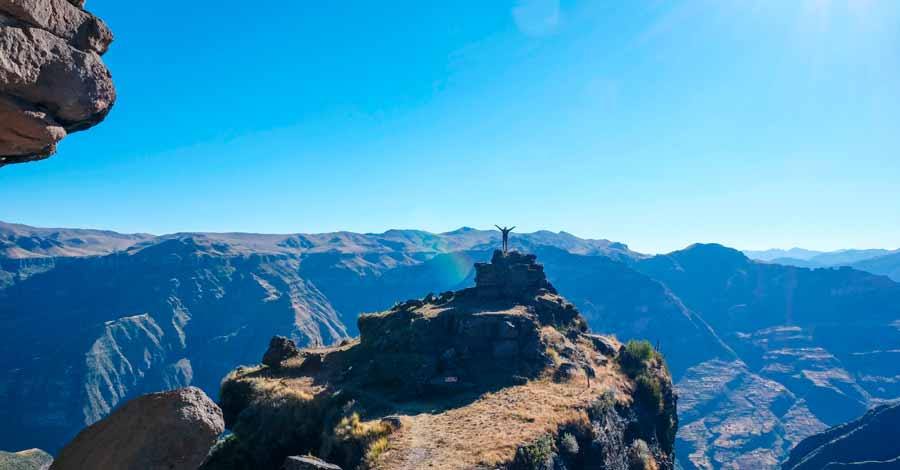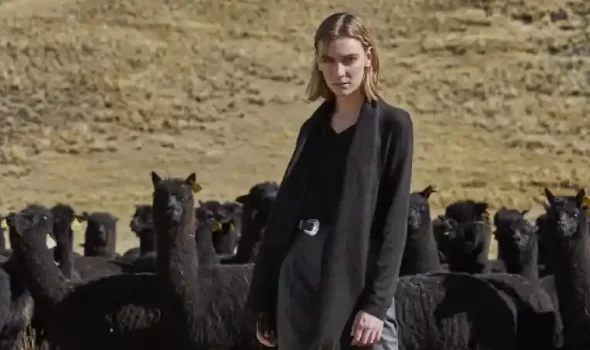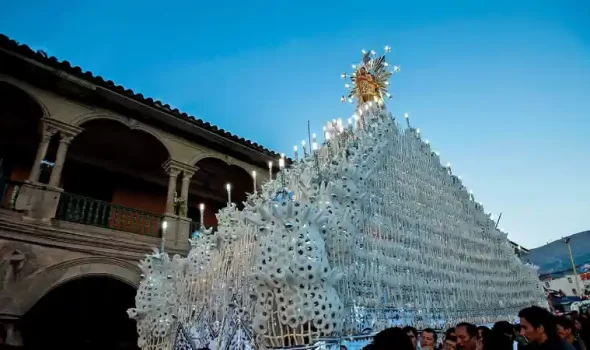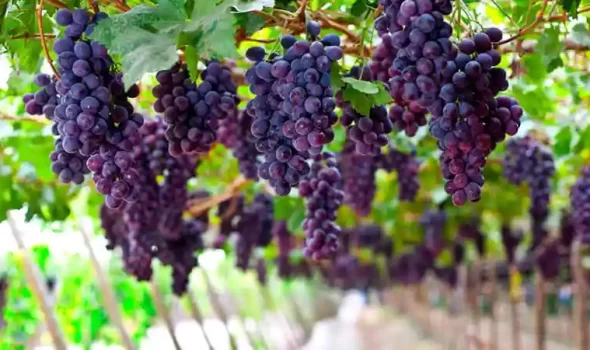Waqrapukara is a magnificent Inca complex in the highlands of Cusco. Most people who come to Cusco have heard of gigantic Inca complexes such as Machu Picchu, Sacsayhuaman, Ollantaytambo, Pisac or Raqchi, few are those who venture to go to a little explored route with landscapes taken from another world, the route to the so-called Waqrapukara fortress.
Accompany Auri and get to know closely the details of Waqrapukara, a great Inca complex that rises at high altitude in a canyon area with incredible landscapes around.
What is Waqrapukara?
Waqrapukara or Huajcrapukara is a large archaeological complex of pre-Hispanic constructions, that is to say, an archaeological site built successively with the technology of the Canchi ethnic group and later the Inca civilization.
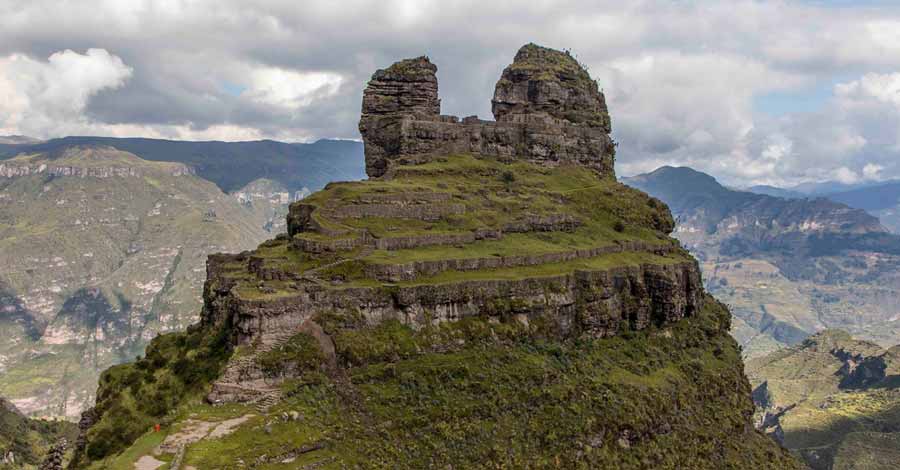
Where is Waqrapukara?
Waqrapukara is located in the district of Pomacanchi, province of Acomayo, Cusco region in Peru. More specifically, Waqrapukara is located on the slopes of the Kenter hill and in the canyon of the mighty Apurimac River, strategically joining the Apurimac valley and the Pomacanchi highlands. Geographically, this archaeological monument is located at the following coordinates:
- LATITUDE SOUTH : 10° 01′ 24″.
- EAST LONGITUDE: 71° 41′ 05″.
What is the altitude of Waqrapukara?
Waqrapukara is located at an altitude of 4,140 meters / 13,582 meters above sea level. This altitude is much higher than Machu Picchu, the city of Cusco or the Sacred Valley of the Incas, but it is much lower than the Vinicunca rainbow mountain and almost the same as the Humantay lagoon.
Etymology of Waqrapukara – What does Waqrapukara mean?
According to the researcher and historian Dr. Victor Angles Vargas, the Quechua word Waqrapukara, etymologically comes from two Quechua words: “waqra” which means horn and the word “pukara” which translates as fortress or barracks. In short, this word waqrapukara means “fortress in the shape of a horn”.
What was the function of Waqrapukara?
Waqrapukra functioned as a fortress, sanctuary and astronomical observatory. That is to say, Waqrapukara was a residence of the nobility of this place; with astronomical observatories and at the same time it was a religious center protected with watchtowers and subway roads.
History of Waqrapukara
Waqrapukara went through two stages of construction: pre-Inca and Inca. In the Pre Inca period it was a small citadel known as “Llaqta Pukara” built by the Qanchi ethnic group between 1500 and 1000 BC. The construction that can be seen today, enlarged and improved, dates from the Inca period and was built during the rule of the eleventh Inca, Huayna Capac.
The Wanchi ethnic group was probably integrated to the Inca empire or Tawantinsuyo by the Inca Pachacutec. Some researchers conclude that the Inca-Qanchi nobility lived in this area.
The rebellion against Inca Huayna Capac in Waqrapukara
There is a very curious version of a rebellion in Waqrapukara, a publication of Aurelio Luna Villena that is transmitted from generation to generation and which tells the following:
The legendary General T’ito Qosñipa, of the army of the eleventh Inca, Huayna Capac, obtained the high awards as general of the conquering armies of the Empire of Tawantinsuyo.
In use of his vacations he came to his tribe Qanchi, stimulated by magnificence of the Imperial Court considering distant and remote the possibility of occupying the Inca throne for his condition of plebeian, arose in his audacious mind, to overthrow the ruler of the Inca empire, with such purpose he ordered to build in secret the Fortress of Waqrapukara, so that in case of failure of his revolutionary adventure he could take refuge and resist any attack of the imperial army.
T’ito Qosñipa proclaimed Inka of the Qanchis, organized an army, which then headed towards Cusco. The Ruler of the Empire of Tawantinsuyo, informed by the subversive activities of T’ito Qosñipa, sent a part of his army to unveil the movement, commanded by General Anqoayllo. Both armies met on the slopes of the Phiñaypampa hill, in the proximities of Corma. After a bloody and bloody battle the hosts of T’itto Qosñipa were defeated”.
As a testimony of this fact, there are still human skeletal remains in the place of the battle. T’ito Qosñipa the Inka Qanchi, after the battle of Phiñaypampa, with the rest of his soldiers, returned to Waqrapukara. The troops of general Anqoayllo pursued the fugitives and surrounded the fortress of Waqrapukara with violent attacks.
When the soldiers of the aforementioned general went up to the fortress, they were thrown into the ravine as they climbed, through the gates to the abyss, at present there are remains of these doors. After fifteen days of resistance to the imperial Inca army, they discovered the water channel that supplied the fortress, they cut this water service to the army of the Inka Qanchi, for this reason he had to capitulate with General Anqoayllo.
T’ito Qosñipa was taken prisoner with a hundred of his Qanchi soldiers before the Inka Ruler of the Empire. Huayna Capac, knowing the reckless courage of the young warrior T’ito Qosñipa, seeing that he would be useful in his conquests, spared his life and made him marry a ñusta chosen by the Inca Qanchi in Cusco. His soldiers were also amnestied, they returned to their Qanchi tribe, with the promise to be loyal to the empire. But the ears of the hundred Qanchi soldiers were cut off. From then on they were called mottoqanchis.
In the future, in the conquest of more Inca territories towards Ecuador by Huayna Capac; T’ito Qosñipa fought with the brave cañaris. For the triumph of the imperial Inca, two thousand Ckañari warriors were brought from the imperial guard, escorting the victor Wayna Capacq. Some of these brave Cañari warriors were also brought to the Qanchis tribe by T’ito Qosñipa; for this reason the Cañari surname also exists today in Pomacanchi.
According to Jorge Leonidas Delgado Vargas, before having their ears cut off, the Qanchis soldiers of T’ito Qosñipa danced the dance of the Qanchis, by order of the Imperial Inca. This dance called Qanchi Tusuy is practiced today in Cusco, especially by the Qanchis of the nineteenth century. From that date they were called Mot’oqanchis, the soldiers of the Inka Qanchi. But since colonial times it remains as Mot’oqanchi surname that still exists today.
What to see in Waqrapukara?
Waqrapukara is made up of two groups of buildings:
The first group is located in the highest part of the building. There are two groups of enclosures separated by a central space of great amplitude. These enclosures have passages, double jamb doorways, a triple jamb doorway and niches that function as ornaments. To find Inca architecture with triple jamb doorways means that they were extremely important places, that is why Waqrapukara was an important sacred place.
The second group is located in the lower area and is comprised of 8 platforms 150 meters long and 2 meters high. Like the first group, two enclosures with double jambs and niches can be observed. However, there are 5 more enclosures located at the east end.
How to get to Waqrapukara?
Currently, there are several access routes to waqrapukara…
- The first access is from Acomayo following the Huáscar branch that goes to the rural community of Huayqui. It is a bridle path of approximately 7.5 kilometers.
- The second access route is from Sangarará, heading southwest on a 15 km-long bridle path.
- The third route passes through the rural community of Huáscar via a bridle path.
- Finally, the site can be accessed from the rural community of Chosecani, following the trail of a pre-Hispanic road.
Waqrapukara tour
There are travel agencies that offer services of one, two or more days to Waqrapukara. In Auri Peru we recommend an experience for a two day visit. Walking enjoying landscapes that seem to be taken from fairy tales and spending the night with a spectacular starry sky in one of the most hidden and fascinating places in Peru is an experience of another level.
Doing a full day tour will decrease the experience but it is also recommended if you do not have much time. In any case, please contact Auri Peru in order to arrange this adventure in Waqrapukara.
Recommendations to visit Waqrapukara
- Wear appropriate hiking shoes, preferably trekking shoes.
- Do warm-up exercises before starting the hike, this will prevent possible muscle contractions.
- Take into account that it is preferable to leave this activity for days after your arrival due to the considerable altitude of Waqrapukara.
- We advise you to acclimatize yourself, which implies that you follow up the effects that the altitude produces on you from the first moment you step on Cusco soil.
- Bring something extra to eat, water and some dried fruit will be the best answer to your physical needs.
- Bring a change of clothes to wear at the end of the activity.
- Warm, light and warm clothing.
- Use trekking poles, they help a lot with the physical effort.
- Do not forget to use sunscreen.
- Do not drink alcohol the day before the activity.
- Use sunscreen and a hat, the radiation in the Andes is very high and can cause a lot of damage to the skin.
Waqrapukara is an Inca sanctuary of the first order that had a great political and religious power not yet deciphered. The entire natural environment warns from afar that you are coming to a special place, out of the ordinary, of incomparable beauty.
If you wish to visit Waqrapukara or other Inca sites of great interest in the Sacred Valley of the Incas, Machu Picchu or near Cusco, do not hesitate to contact Auri Peru. We are professionals who will be delighted to design your dream trip to Peru in every single detail.




